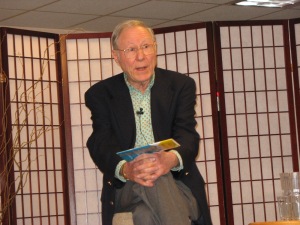A school in Walla Walla, Washington, and a researcher in Canada, have recently impacted and challenged my thinking.
I finally had a chance to see the movie, Paper Tigers, a documentary about an alternative high school in Walla Walla, Washington. For years after it came out it was shown in sponsored venues, usually a community or school setting, and always accompanied with follow-up discussion. I occasionally looked at their website to see if a showing was scheduled within driving distance. A few days ago a showing of the film took place in Napa, a half hour from me, and I jumped at the chance to attend. I was not disappointed.
And then this morning I came across* an article by Michael Ungar, a professor of Social Work at Dalhousie University in Halifax, Nova Scotia. He is also the Canada Research Chair in Child, Family and Community Resilience and besides overseeing projects around the world, has authored more than a dozen books, including The Science of Resilience and the True Path to Success. The title of the article I read this morning – Put Down Self-Help Books. Resilience Is Not a DIY Endeavor – caught my eye. (Click on title to access article.)
Ungar explains that there is a huge industry right now aimed at helping people fix their own problems. From mindfulness to neuroplasticity to cognitive behavioral coaching to career coaching to Kripalu yoga, the options for advice, guidance and inspiration are endless. These approaches, Ungar continues, place the task of becoming motivated and, indeed, transformed, on the individual. His view is that most people fail when it comes to transformation, whether it be keeping the weight off or doing better in that next relationship. Self-help emphasizes that everything we need is already inside of us. Ungar states plainly, “The notion that your resilience is your problem alone is ideology, not science.”

He goes on to say that –
“Resilience is not a DIY endeavor. Self-help fails because the stresses that put our lives in jeopardy in the first place remain in the world around us even after we’ve taken the “cures.” The fact is that people who can find the resources they require for success in their environments are far more likely to succeed than individuals with positive thoughts and the latest power poses.”
Toward the end of the article he summarizes the data complied from his research –
“The math was daunting, but what it showed was the relationship between risk exposure, resilience and behavioral outcomes for almost 500 young people, all of them facing serious challenges. We later verified these results with more than 7,000 young people around the world, but this was the first proof that let us say with certainty that resilience depends more on what we receive than what we have within us. These resources, more than individual talent or positive attitude, accounted for the difference between youths who did well and those who slid into drug addiction, trance and high-risk sexual activity.”
Time and again as I read the article I stopped and wondered about Choice Theory. Is the “ideology” of Choice Theory an example of what Ungar is talking about? Is Choice Theory just another DIY self-help opportunistic resource? I don’t think it is. I don’t think Ungar was taking aim at a Choice Theory set of beliefs.
I don’t think Choice Theory is the kind of problem Ungar writes about for the following reasons:
+ I believe in and benefit from Choice Theory and I resonate with the author’s key points. 🙂
+ Choice Theory acknowledges the frustration, the pain, and even the devastation that tough circumstances can bring, and doesn’t suggest that different thinking will fix someone or their circumstances.
+ Choice Theory explains that we only have direct control over our thinking and our behavior, and then asks a person to begin to identify the kind of thinking and the kind of behavior that will move her/him forward.
+ Choice Theory ultimately focuses on a plan, which very likely will involve accessing resources.
What other reasons should I have listed here? Please let me know.
I very much agree with Ungar when he states that agencies outside of an at-risk person – whether school, community, church, city, or government agencies – must work to provide reasonable and tangible supports that prevent an/or solve unforeseen emergencies or systemic problems. I agree that too many people are struggling to make it with almost no resources at their disposal. I don’t think there is anything in Choice Theory that wants to overlook this or sugarcoat it.
The movie, Paper Tigers, is such a good example of what can happen when two important pieces are included. First, the school recognized the value of positive relationships combined with expectations for competent performance. Insightful and firm leadership was implemented within an environment of warmth, love, and respect. Second, the school recognized that students who lack resources are placed at an unfair vantage point and they took steps to provide students with access to health care, counseling services, and even transportation across the state to a college to which a student applied.
Choice Theory explains that a person’s Basic Needs must be met, with survival and safety needs being as basic as it gets. I feel that the teachers at Lincoln High School exemplified the non-punitive principles of Choice Theory, while seeking to provide the resources that Ungar describes.
========================
* I came across the Ungar article while taking a look at the Mad In America website. I can’t say enough good things about this resource and the community that contributes to it. Glasser was very impressed with Robert Whitaker’s book, Mad in America: Bad Science, Bad Medicine, and the Enduring Treatment of the Mentally Ill (2002) and bought a hundred copies of the book to give away. You can access their website (which I recommend) here – Mad in America
+++ NEWSFLASH!! – The movie, Paper Tigers, is now available on iTunes.












